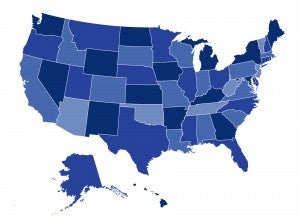
Not too long ago I had the opportunity to visit the great state of Oregon and meet with officials in their Insurance Division. I was there as part of a Robert Wood Johnson Foundation-funded project to monitor state implementation of the Affordable Care Act. I learned about their rate review program, which has become a national model for oversight, transparency and effectiveness. At the time, I was particularly struck by Oregon’s vision of using rate review to encourage higher quality health care and reduce waste in the health delivery system.
Now, hot off the presses, a consumer organization based in Portland, Oregon, has released a report examining the effectiveness of that state’s rate review program, and calling on the state’s Insurance Division to do more to contain health care costs. The report, authored by the Oregon State Public Interest Research Group, or OSPIRG, documents the state’s successful efforts to reduce health insurance premium rates by over $80 million over the last three years. But it also identifies important ways the program can be expanded. Some key takeaways from the report include:
- The Oregon Division of Insurance has reduced rate hikes by over 17 percent, on average. Prior to the ACA, rate increases were reduced by an average of only 6 percent.
- Since enactment of the ACA, rate review has helped ratchet down insurers’ administrative costs by 5.4 percent on average, reducing a trend toward higher administrative costs prior to the ACA.
- The authors recommend that Oregon can go further in the rate review process to encourage insurers to do more to contain costs and improve health care quality. They note that rate review can help hold insurers accountable for implementing value-based payment strategies to improve patient safety, encourage care coordination, and hold down provider reimbursement increases.
- While Oregon already has one of the more transparent rate review programs in the country, the report identifies ways the Division can do more to make the review process more consumer-friendly, such as notifying consumers and small businesses about rate proposals that affect them, and ensuring they have sufficient opportunity to comment.
During my visit to Oregon, Insurance Division officials were excited about the potential to use rate review to hold insurers accountable for doing their part to build a better, more efficient health care system. And it turns out insurers might not be as opposed to such efforts as one might think. As one official told me, “Our hospital providers have such a monopoly and they can demand reimbursement increases. As much as our [insurers] don’t like regulation, they have also told me the Division can be very helpful if we help them say ‘no’ to a hospital.”
In previous work I’ve reported that Rhode Island and New York have also been exploring ways to use rate review to affect some of the underlying causes of premium rate increases. As public attention once again turns to proposed premium increases, such as those filed recently in Maryland, this is an area we’ll continue to watch.

